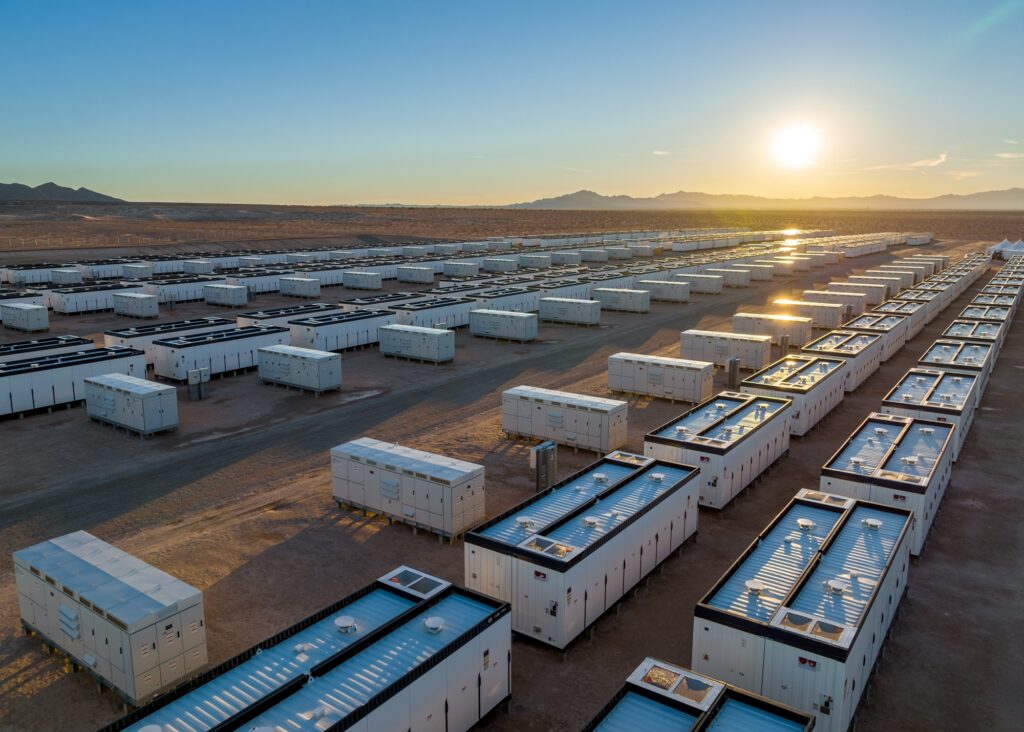
Peaker plants are fossil-fueled power plants that come online only during periods of peak electricity demand. Even though they don’t run all the time, they’re some of the more egregious polluters on the grid.
These power plants can be replaced with battery storage, also known as BESS (battery energy storage systems). Battery systems can be used to store energy from renewable sources, like wind and solar, to be released when the electric grid needs extra power.
There have been questions about the safety of battery storage, many of which arise because of uncertainty about the differences between Battery Energy Storage Systems and Commercial Lithium Batteries. This chart can help explain:
Battery Energy Storage Systems vs Commercial Lithium Batteries | |
|---|---|
Battery energy storage systems (BESS) have to follow fire prevention building code regulations | There are no real actionable standards in place for commercial lithium batteries like those in e-bikes |
Large BESS units are protected against the elements because they are cased in weather-proof containers. BESS don’t move locations so they lack the risks found with mobile battery packs (like those in E-bikes | Easily damaged by external factors, drops, overheating, overcharging, rapid use, and water damage that can all lead to explosion |
BESS units have more specific safety systems on site to deal with failure and fire/explosion risk. | When fire or explosion occurs traditional fire extinguishing techniques may be of little help. Many apartments are not fitted with fire suppression systems that can handle battery fires. |
BESS have more building regulations to adhere to so are generally made with higher quality materials with greater stability (generally higher industry standards). | The materials found in small scale commercial lithium batteries can often be made with lower quality materials increasing risk of failure. |
Higher end BESS units use smart software to ensure the input and outflow of energy happens at a regulated pace. | Charging and discharging of energy stored in the battery is fully in the manual control of the user, exposing the battery to greater failure risks. |
Thanks to Shelley Robbins of Clean Energy Group and Victor Davila of The Point CDC for the information in this chart.
What about safety issues with grid-scale battery storage (BESS)?
Most news headlines about deadly battery fires refer to the batteries used for “mini-mobility” vehicles, primarily e-bikes and scooters. New regulations are coming into effect which will ensure that low-quality components and shoddy manufacturing techniques that have been used in less expensive e-bikes and scooters are eliminated, which will help ensure that incidents become far less common.
Larger grid batteries have a better track record. The California Public Utilities Commission estimates that only around 2 percent of grid storage facilities will experience major safety-related incidents, with the risk greatest during the first two years of operation. While lithium ion battery fires have gained media attention, the technology’s overall safety record is strong and continuously improving.
The Electric Power Research Institute (EPRI)’s BESS Failure Database tracks failure events in grid-scale storage worldwide. Over the last 4 years, there have been on average 10 such failure events annually, even as global battery deployments have have grown twenty-fold.

10-15 safety events a year may sound like a lot, until you realize that those numbers are dwarfed by those in the fossil fuel industry. Pipes transporting natural gas cause thousands of explosions in the US each year.
Other improvements, including lithium-free designs with lower fire risks, will be arriving on the grid in a few years.
Even with the rapid growth in deployments, failure incidents in grid-scale battery storage are infrequent, and are avoidable using the lessons learned from past incidents to further reduce the possibility of future accidents as they are applied to new storage facilities and integrated into building and fire codes and standards.
References:
https://storagewiki.epri.com/
https://www.wired.com/story/big-grid-batteries-are-booming-so-are-fears-fire/
https://ag.umass.edu/clean-energy/energy-storage-information
For a webinar about Battery Energy Storage Systems safety, see:
https://event.on24.com/wcc/r/4439896/FA04095AC00EDD886B45FC266B4A8630
Resources:
https://rmi.org/clean-energy-101-how-batteries-can-support-grid-reliability/